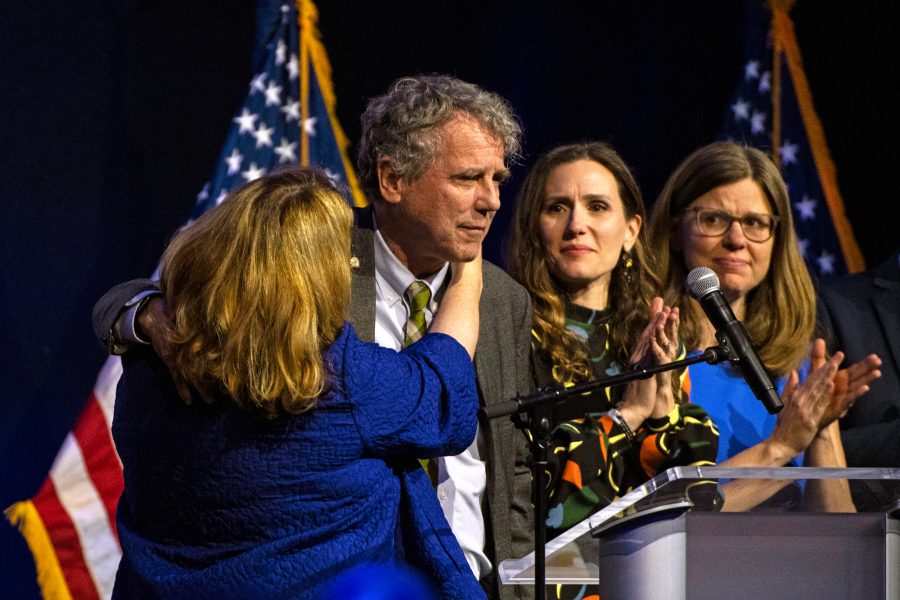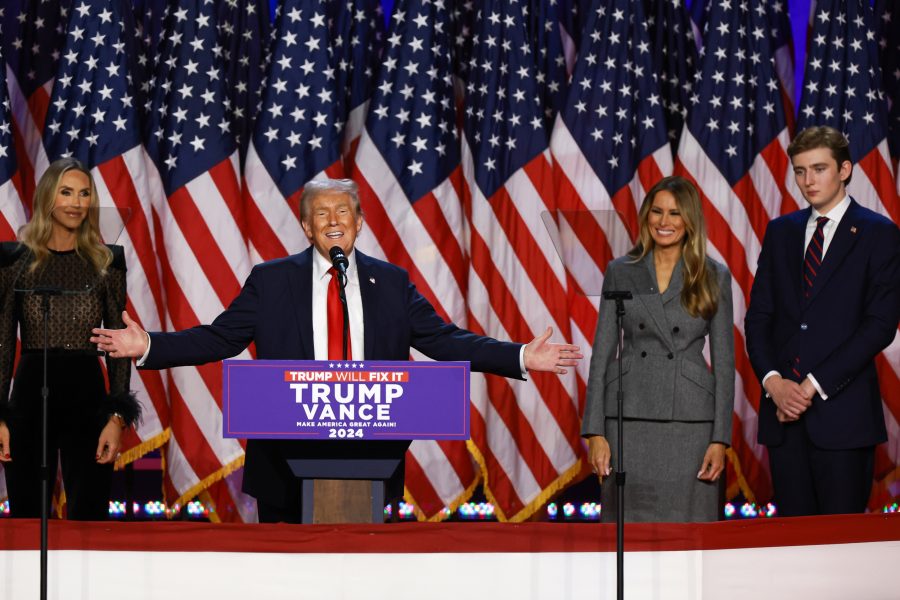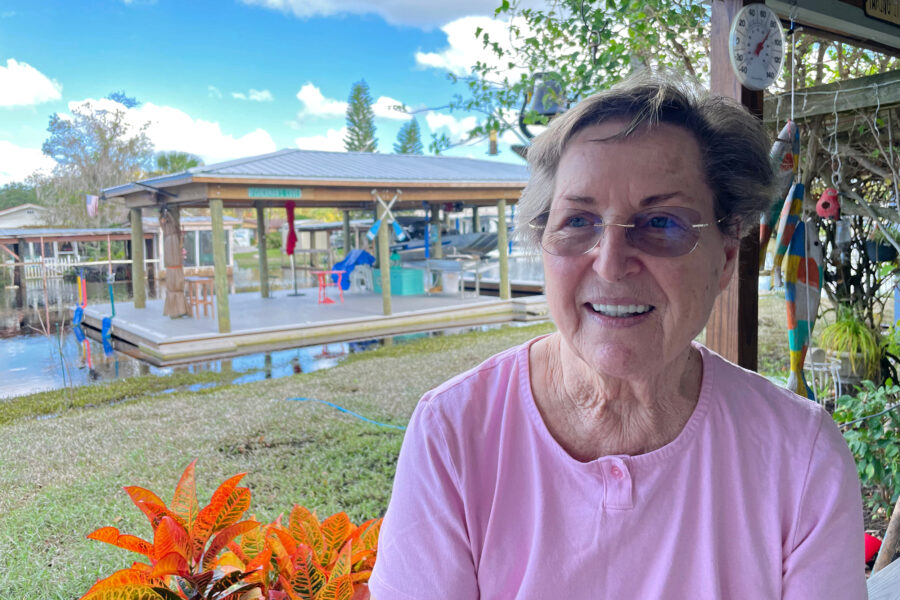Tribal Members Journey to Washington Push for Reauthorization of Radiation Exposure Compensation Act
Members of tribal nations from Arizona and New Mexico have been in Washington, D.C. this week advocating for the House of Representatives to vote on a bill to reauthorize and expand the Radiation Exposure Compensation Act, a federal program that compensates individuals who become ill due to exposure to radioactive materials related to the United States’ nuclear weapons program.
Congress passed RECA in 1990. The program’s conditions depend on location, disease type and source of exposure, like uranium mining or transporting uranium ore. The bill to reauthorize and expand eligibility criteria received bipartisan approval in the Senate in March. The House has yet to consider it, allowing the program to expire in June.
Under the proposal, the number of places eligible for the program’s benefits would expand to include areas impacted by waste from the Manhattan Project. It would also add states and territories that were harmed by nuclear weapons testing.
Explore the latest news about what’s at stake for the climate during this election season.
Survivors of radiation exposure continue to call on House Speaker Mike Johnson to put the legislation before the body for a vote. In June, Johnson cited costs associated with the reauthorization and expansion as reasons for not moving it forward.
“We just want him to be able to hear our stories and our voices,” said Maggie Billiman with Sawmill Diné Warriors, a group of Navajo Nation members. Most of them live in the small community located approximately 20 miles north of Window Rock, Arizona.
Billiman grew up in Sawmill. She now has thyroid disease, pancreatic disease and chronic obstructive pulmonary disease, and thinks exposure to fallout from testing in Nevada caused her illnesses.
“None of us thought that it would expire without a vote. But it did, and that goes to show you how little concern they have for people,” said Tina Cordova, co-founder of Tularosa Basin Downwinders Consortium.
That group’s mission is to bring attention to the health effects suffered by residents living near the Trinity Site, where the first atomic bomb was detonated on July 16, 1945, in south central New Mexico. This area would finally be covered under RECA if the program was reauthorized.
“Did you see ‘Oppenheimer?’” asked Mary Martinez-White with the Tularosa Basin group. “Ours is the story they didn’t tell.”
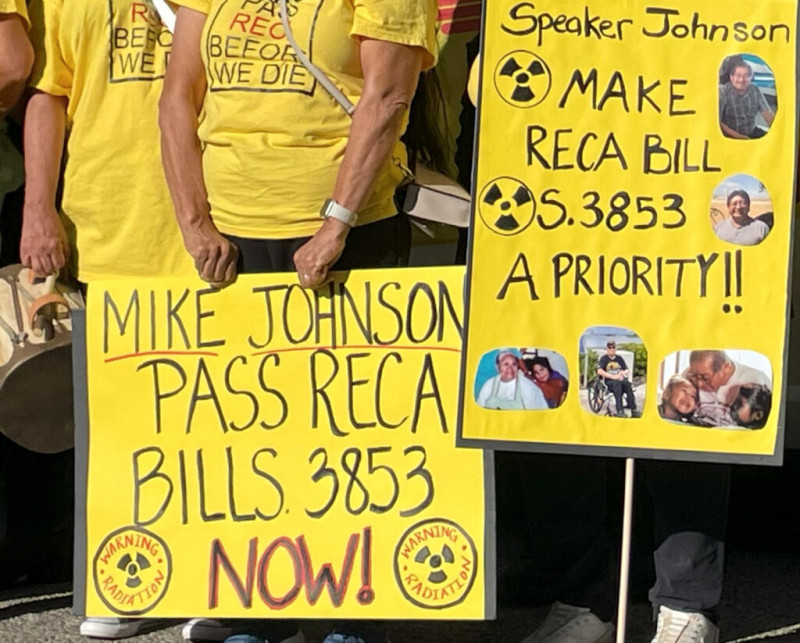
Evie Tsosie, of Kayenta, Arizona, was one of the 50 tribal members who traveled more than 30 hours on a bus from Albuquerque to demonstrate in front of the Capitol.
Tsosie worked from 1976 to 1981 in uranium mines in the Ambrosia Lake and Church Rock areas of northwest New Mexico.
“We had no protection—no masks, no gear,” she said during the demonstration on Sept. 25.
She was diagnosed twice for breast cancer and once for colon cancer. Although Tsosie has recovered, “some of us are still struggling through illness,” she said.
A day earlier, the bill’s sponsor, Sen. Josh Hawley, R-Mo., was joined by members of the New Mexico delegation—including Democratic Sens. Martin Heinrich and Ben Ray Luján, both co-sponsors of the Senate bill—at a press conference calling on Johnson to hold a vote on the legislation.
“He and I have had a number of very productive conversations,” Hawley said about Johnson. “He hasn’t committed to putting anything on the floor. That’s what we need to see.”
Claims paid under RECA totaled $2.7 billion as of Sept. 25, according to the U.S. Department of Justice.
Hawley explained that House members have talked about lowering the costs associated with the bill, including a cap on spending.
“Costs should be no barrier,” he said. “There are numerous ways to get this done.”
Efforts to get Johnson’s attention continued on Sept. 25 when a group of about 60 people made their way to his office on the fifth floor of the Cannon House Office Building.
Many of them wore T-shirts stating: “Speaker Johnson. Pass RECA before we die.”
Jay Hurst, a legislative director for Johnson, happened to come out as they were gathering.
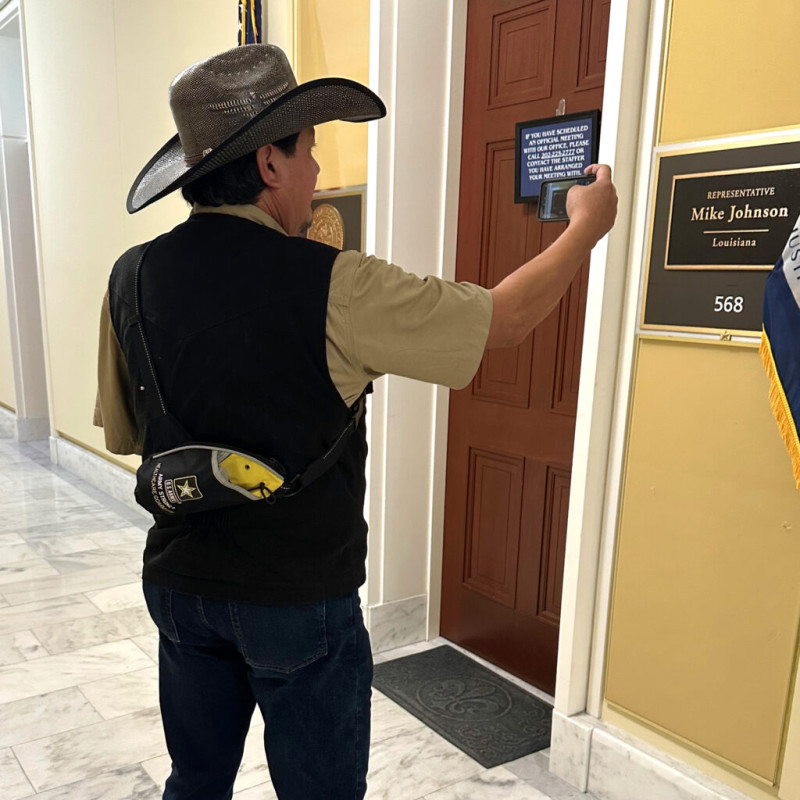
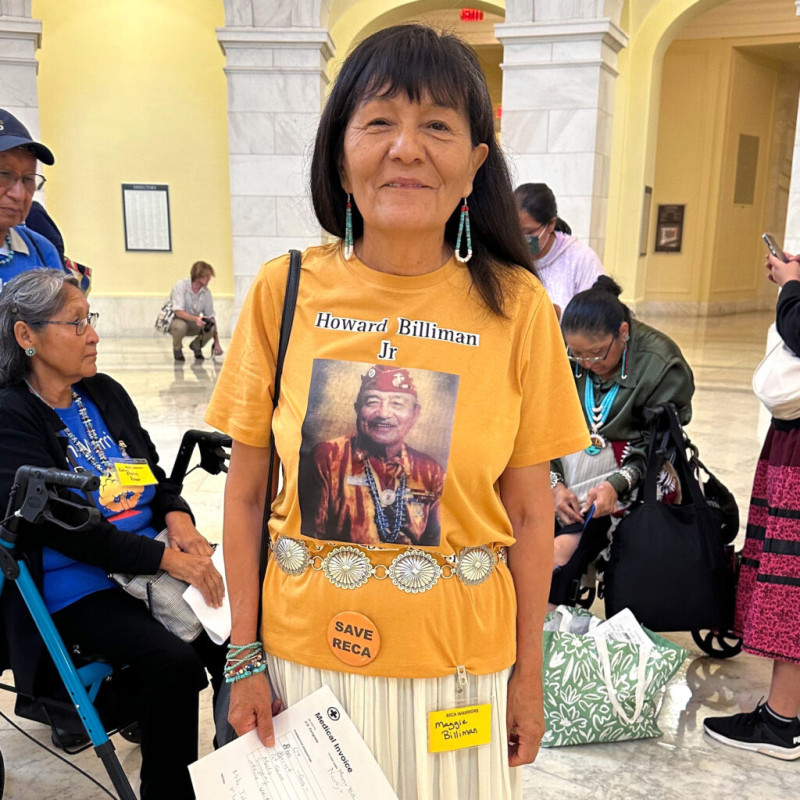
RECA supporters arrive at House Speaker Mike Johnson’s office in Washington on Sept. 25. Credit: Georgina Gustin/Inside Climate News
As Hurst opened the door and stepped out, Cordova, co-founder of the Tularosa Basin group, said the people gathered behind her were former uranium miners and downwinders. Many of them had copies of medical bills with them, which they intended to leave in Johnson’s office.
“We want to drop off some things for Speaker Johnson. Obviously, we can’t access him at the Capitol, so this is our next best hope,” she said. “We are all living right now basically for the day that Speaker Johnson brings our bill, the Radiation Exposure Compensation Act, to the floor. It’s why more than 60 people traveled on a bus 37 hours to be here.”
A few people were allowed into the office.
Hurst later said they had come to the wrong office—that this was for the Louisiana constituency—and that the speaker’s office was elsewhere.
“There are a lot of voices on this,” he said. “I wish you good luck.” Then he got on the elevator and left.
Cordova, in an interview earlier in the week, pointed out that 57 districts represented by Republicans would benefit from the extension and expansion of RECA.
“We were victims of our government’s pursuit of nuclear superiority,” she said. “They used us, and then they walked away.”
Before leaving Albuquerque on Sept. 22, there was a send-off rally outside the National Hispanic Cultural Center. Supporters of saving RECA held banners and waved signs with statements like, “Pass RECA before more people like me pass away!”
“It ain’t over ‘til we win,” the group sang before the event concluded.
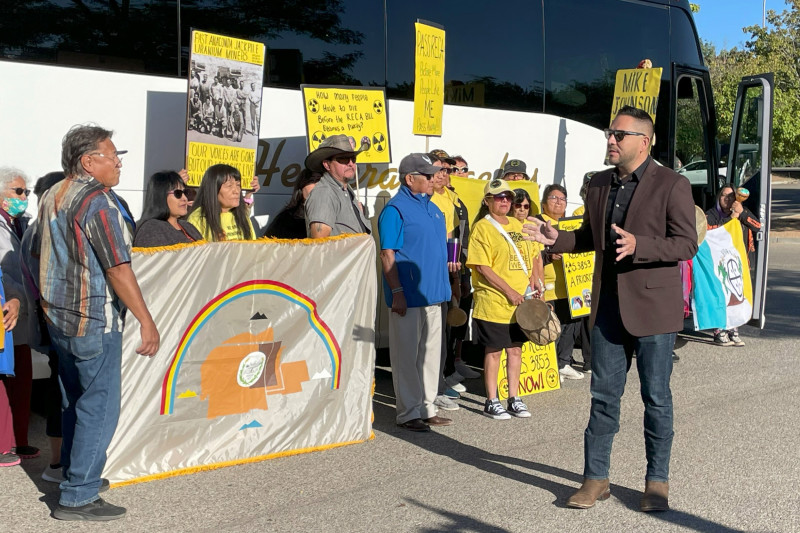
Lori Lee Sekayumptewa, who is Navajo, Hopi and Sac and Fox, emphasized the urgent need for health care because of uranium contamination affecting Navajo and Hopi lands.
She was going to Washington to help educate the public about what is happening to Indigenous communities and to educate leaders.
“Too many times we are ignored, we are bypassed, we are not validated,” she said.
She highlighted the personal impact, speaking about her sister and grandmother’s struggles with cancer and other illnesses. She attributes it to uranium exposure.
Her 50-year-old sister was diagnosed with stage 4 thyroid cancer and faces challenges in accessing medical care.
Sekayumptewa wiped away tears while calling for better health care support and an expedited application process for those affected by uranium exposure.
“We need health care that identifies these illnesses that have been brought on by the contamination of uranium within our lands, our animals, our water, but importantly, our families,” Sekayumptewa said.
The Navajo Nation is about 27,000 square miles, larger than the state of West Virginia. The hospital in Tuba City, Arizona, has the only cancer center on the tribe’s land. It is common practice for medical providers to refer cancer patients to oncology centers away from the tribal land, which imposes travel expenses many patients cannot afford.
“We need better support for our people that are suffering because they want to live,” Sekayumptewa said.
Georgina Gustin contributed to this report.
About This Story
Perhaps you noticed: This story, like all the news we publish, is free to read. That’s because Inside Climate News is a 501c3 nonprofit organization. We do not charge a subscription fee, lock our news behind a paywall, or clutter our website with ads. We make our news on climate and the environment freely available to you and anyone who wants it.
That’s not all. We also share our news for free with scores of other media organizations around the country. Many of them can’t afford to do environmental journalism of their own. We’ve built bureaus from coast to coast to report local stories, collaborate with local newsrooms and co-publish articles so that this vital work is shared as widely as possible.
Two of us launched ICN in 2007. Six years later we earned a Pulitzer Prize for National Reporting, and now we run the oldest and largest dedicated climate newsroom in the nation. We tell the story in all its complexity. We hold polluters accountable. We expose environmental injustice. We debunk misinformation. We scrutinize solutions and inspire action.
Donations from readers like you fund every aspect of what we do. If you don’t already, will you support our ongoing work, our reporting on the biggest crisis facing our planet, and help us reach even more readers in more places?
Please take a moment to make a tax-deductible donation. Every one of them makes a difference.
Thank you,
David Sassoon
Founder and Publisher
Vernon Loeb
Executive Editor
Share this article
Disclaimer: The copyright of this article belongs to the original author. Reposting this article is solely for the purpose of information dissemination and does not constitute any investment advice. If there is any infringement, please contact us immediately. We will make corrections or deletions as necessary. Thank you.



